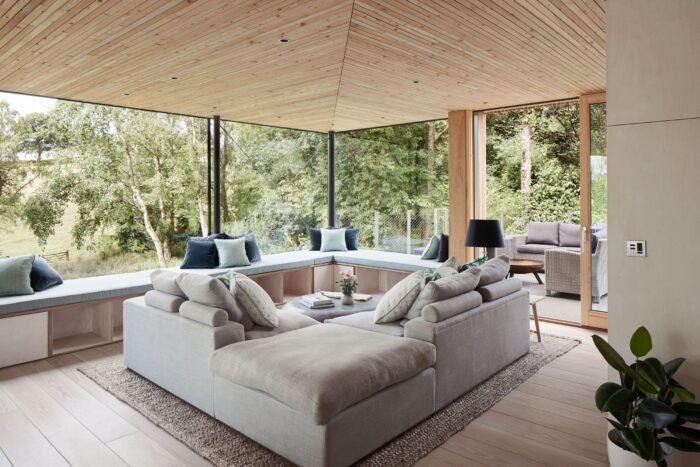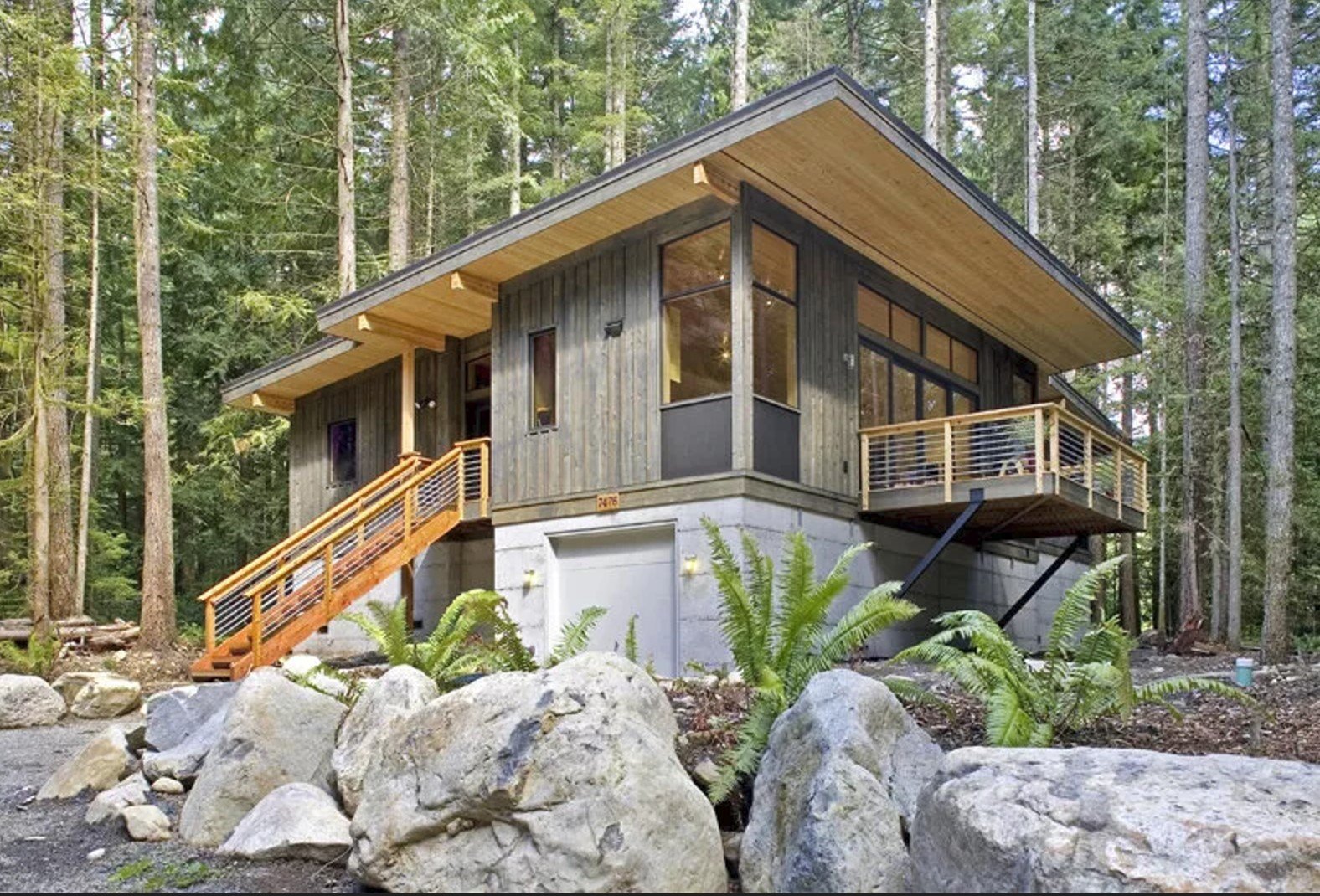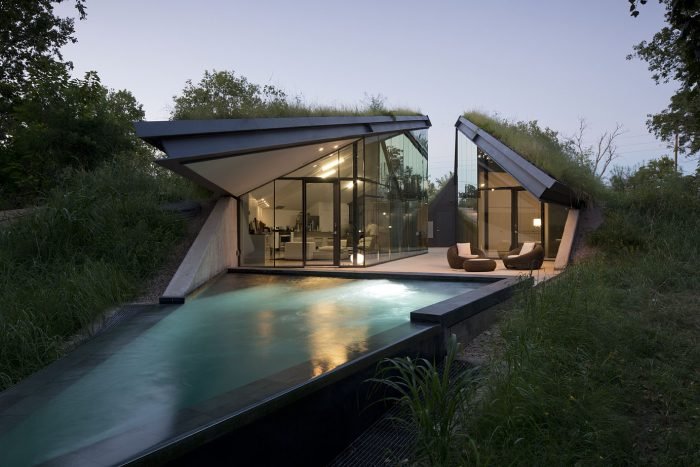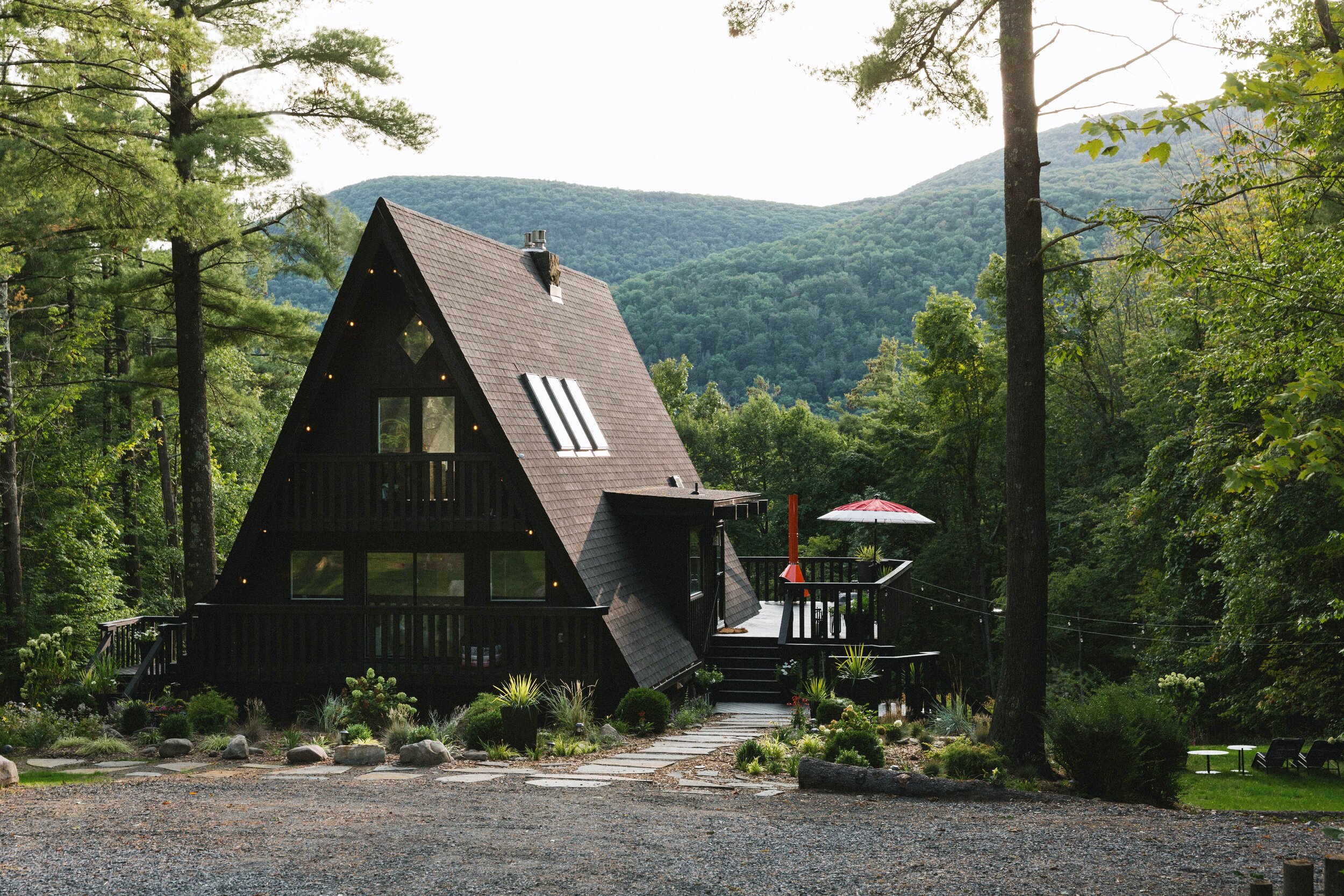If you’re worried about your carbon footprint, there’s a lot you can do than just recycle.
If you’re planning a new build or remodeling an older home, you’ll want to consider building an eco-friendly home inside and out.

Green homes are environmentally friendly through sustainable building materials, ethical construction processes, and energy conservation systems. Keep reading to learn how to build an eco-friendly home from the ground up.
The Benefits of Building an Eco-Friendly Home
Before we dive into the how it’s good to cover the why. Why build an eco-friendly home? To some, the answer may be obvious, as climate concerns are at the forefront for many. But if you’re not already aware, there are many important benefits to having a green home. Investing in a green home will:
- Protect the environment
- Conserve energy use
- Be better for your health
- Save you money
Green home design focuses on using environmentally friendly building materials and products. This helps protect natural resources and ecosystems, while also reducing pollution.
Green homes also use less water, electricity, heating, and cooling which helps reduce waste and carbon emissions. The U.S. Green Building Council has found on average eco-homes use 20-30% less energy and water than non-green homes, while some report up to 60% in savings. This means you’re not only conserving energy, but you’re also spending less money on utilities.

Eco homes don’t only focus on helping the environment, green architecture and design aim to create healthier living environments with good air quality by using materials and products that are non-toxic. The EPA has reported that concentrations of pollutants indoors are 2 to 5 times higher than outdoors on average.
Monthly utility bills are not the only area you save money with a green home. They also can be eligible for tax benefits and lower insurance rates. They can be built close to the same cost as non-green homes and often sell more quickly and for more money.
So considering an eco-home benefits the environment, your health, and your wallet, it’s definitely a wise investment.
How to Build an Eco-Friendly Home
So whether you’re remodeling an existing home or you’re planning a new build from the ground up, there are plenty of ways you can go green with your design decisions. Keep reading to learn all about it.
Use Eco-Friendly Building Materials
Nearly all of the materials used for building your home come in sustainable options. Essentially you’ll want to focus on using materials that are non-toxic and have been recycled and/or have been produced with sustainable methods.
For the physical structure of your home consider using recycled steel and aluminum or reclaimed wood. The manufacturing process for steel is very energy intensive, so using recycled products are much better for the environment.
You can also use recycled insulation, or sheep’s wool insulation. Remember a well-insulated home is also a green home. Good insulation and sealing keep warm or cool air inside your home, reducing leaks and energy waste.
Be sure to use paints that are non-toxic with low or zero VOC count. VOC stands for volatile organic compounds which release toxins into the air. Many of the paint brands you’re already familiar with like Sherman Williams, Behr, and Benjamin Moore have eco-friendly paint options.

Look for counter and flooring materials that have been made with sustainable production methods. For sustainable countertops, we love Cosentino which has a number of green brands. Not only do they use recycled materials, but they’re also committed to sustainable production methods. Not to mention their products are stunning and are made to last.
For eco-friendly flooring think natural materials like wood and stone. Reclaimed wood is wood that was taken from another structure so it’s a very sustainable option. Using natural materials in your home also promotes better air quality. You’re going to want to avoid building materials made with formaldehyde like some plywoods or particleboard.
Also when you can, incorporate refurbished products like used windows or doors. It’s a great eco-friendly choice. You’re giving something used new life and preventing it from ending up in the trash.
Last but not least shop local! When you buy local products and materials for your home you’re not only supporting local businesses, but you’re also reducing the need for shipping and transport from a long distance which cuts back on carbon emissions.
Use the Natural Landscape to Your Advantage
Simply put work with your surroundings, not against them. Try not to disturb the natural landscape as much as possible. Build vertically rather than horizontally, and incorporate plenty of native plants into your landscaping.

Make use of natural light by including plenty of windows and skylights. Not only are natural light-filled rooms enjoyable to spend time in, but they also help reduce heating and electric costs.
Think about room placement, based on the natural light available. What rooms do you want to take advantage of morning light, what about afternoon light?
Just as you’ll want to take advantage of natural light for heating purposes in the cooler months, but sure to get solid window treatments for the warmer months when you’ll want to keep rooms cooler.
Install Eco-Friendly Appliances and Fixtures
When making sure you’re home is energy efficient you’ll not only want to think about insulation and sealing, but also the appliances and fixtures you use.

How do you know if a product is energy efficient? Look for an Energy Star label. An appliance or product with an Energy Star label has been certified by the EPA for meeting strict energy-efficient standards. They maintain a high level of performance while helping you save energy.
Install energy-saving products throughout your entire home from kitchen appliances, HVAC systems, water heaters, lighting, electronics, and more. Energy Star products use 10-50 percent less energy each year than regular appliances (Energy Sage).
Also, think about installing WaterSense systems which also meet strict water conservation criteria. Install low-flow toilets, faucets, and showerheads to help conserve water throughout your home.
Harness Solar Energy
If you want to do even more to cut back on your energy use think about investing in solar energy.
Installing solar panels on your roof will reduce your energy bill (or in some cases eliminate it entirely) and will add to the value of your home. Though it sounds like a big expense, plenty of companies make it simple and cost-effective to add solar panels to your home.

Solar Reviews has a helpful calculator to see if solar panels make sense for your home.
If you’re interested in renewable energy but aren’t able to install solar panels on your roof, there are other options to consider. Think about installing solar water heaters, heating, ventilation fans, and outdoor solar lights.
Ensure High-Quality Ventilation
Part of creating a green home is to make sure the interior environment is healthy, particularly the indoor air quality. This not only means using non-toxic products and materials in your home, but it also means having good ventilation.
Installing an energy-efficient HVAC filtration system that is regularly maintained will also help ensure good indoor air quality.
Investing in smart technologies in your home is also something to consider. Smart thermostats for example can help you save on your heating and cooling costs while keeping your home well ventilated.

Shop Sustainable or Recycled Furnishings
Another great way to make sure your home is green is to design it with sustainable or recycled furniture.

How do you know if a piece of furniture is sustainable? Typically, eco-friendly furniture is made from materials that have low or no environmental impact and is produced without causing a lot of carbon emissions or toxic pollution. It usually has a long lifetime and can be recycled, or is biodegradable.
For sustainable furniture and décor that’s also stunning, check out our list of top eco-friendly and ethical home brands. You can also shop vintage or upcycled furniture for sustainable design choices. Again you’re giving something used a new purpose while preventing it from ending up in a landfill. Mixing and matching vintage and modern pieces can create a stunning design aesthetic.
Shopping local is always a good decision because you’re minimizing transport costs and carbon emissions.
Get Professional Help
Do you like these ideas but would rather have a professional team guide you through the entire process?



